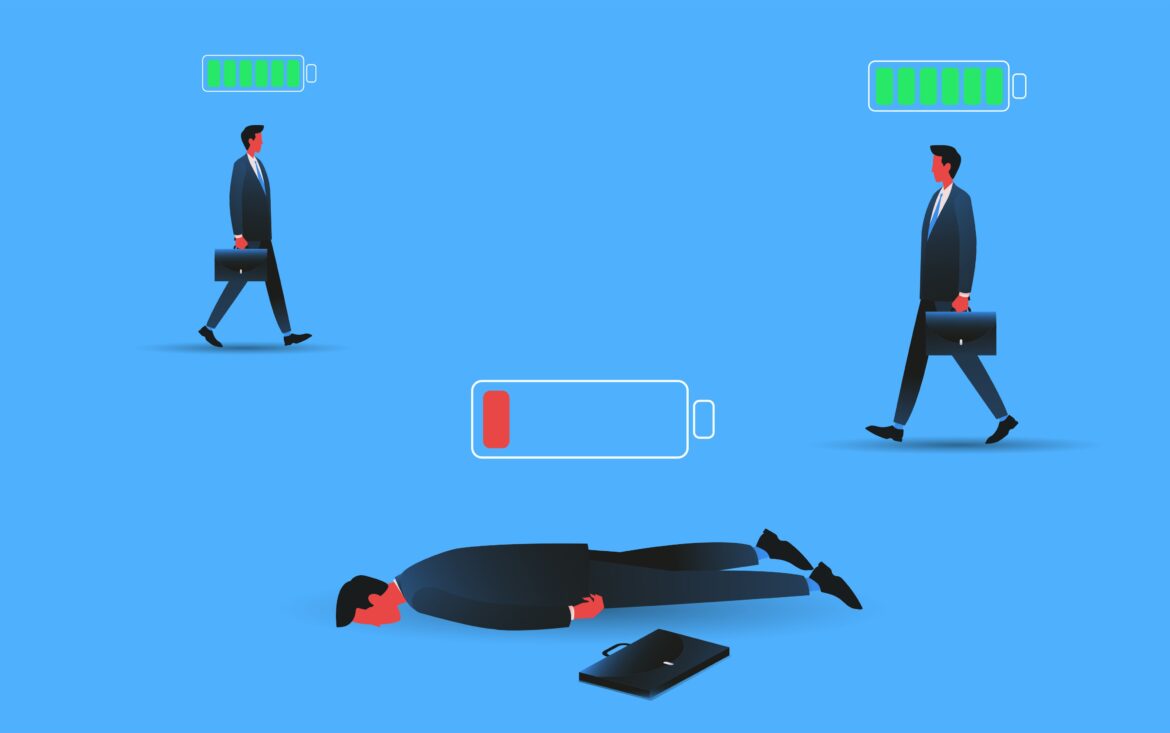Burnout. A lot has been written about this. Not a day goes by without an article, a research paper, a podcast, a blog, or a vlog on the topic.
To provide some context on the seriousness of this issue, back in 2016, the Guardian newspaper reported on a World Health Organization (WHO) analysis, which found that without scaled-up treatment, a staggering 12 billion working days – or 50 million years of work – will be lost to depression and anxiety disorders each year between 2016 and 2030. It puts the annual loss to the global economy at $925bn. In the same article, the cost of increasing psychosocial counselling and antidepressant medication over the next 15 years globally was set at $147bn.
Now, while that indicates an onus on government and health authorities to manage, much of the published work talks about the ways in which employees can try to cope, deal with, and/or address burnout. From taking an extra yoga class to learning when and how to say no, or auditing where one spends their time for a week or more, the one common theme appears to be that the onus for preventing or addressing burnout lies with the employee.
However, I was intrigued by reading a piece by Jennifer Moss in the Harvard Business Review (HBR), which took what I consider to be a contrarian view of burnout, that discusses the onus being more with the employer rather than the employee.
I agree with a lot of what Ms. Moss said, and while I think that the onus lies on both the employer and the employee, it is the employer’s role that I want to address here.
First and foremost, organizations are responsible for creating, fostering, and maintaining workplace cultures and environments. This takes place from the top-down as well as from the bottom-up. Negative actions and behaviours, when left unchecked, can lead to toxicity, which then leads to disengagement, depression, and division–all spreading like a cancer within the organization.
Morale takes a hit, employees become jaded and skeptical, the blame game increases, and that is when all that negativity starts to creep into an employee’s daily life. Work becomes a burden–a chore. Passion and interest dissipate, workplace absenteeism rises, time spent searching for other jobs increases, and commitment to the organization becomes a non-starter. The irony in all of this is that in most cases, rather than reach out to employees to ask how they are feeling, most organizations retreat, almost cocooning, which only exacerbates the death spiral.
What if, instead, organizations took a harder look at themselves and undertook some soul-searching? That would entail leaders doing what they are supposed to be doing: leading the charge. They could find ways to break the cycle of negativity and unshackle the organization of restraints that hold it back, engage with employees in new learnings and uncomfortable questions. With an openness to seeing things in a new light, they may adopt a visceral reaction to, “Well, that’s how we’ve always done it before…”
We know that the world of work has changed, post-pandemic. Organizations are in a unique position to decide whether that is change for the better or for the worse. This is a gift horse looking at you straight in the face, let aside the mouth.
As Ms. Moss states in her article, “With “burnout” now officially recognized by the WHO, the responsibility for managing it has shifted away from employees and toward employers. Burnout is preventable. It requires good organizational hygiene, better data, asking more timely and relevant questions, smarter budgeting (more micro-budgeting), and ensuring that wellness offerings are included as part of your well-being strategy.”
There is a lot to unpack there. In essence, shifting the onus onto organizations means that everything requires a review, keeping in mind that not all fixes or solutions require huge monetary spending. And by asking for feedback from employees and analyzing data on a regular basis, organizations will be surprised to hear that their fixes are not as grand and/or onerous as they originally believed. It could be as simple as changing the organization’s coffee supplier or creating better ergonomic conditions. At other times, it might involve organizational behavioural change.
It is time for organizations to wake up and smell the coffee (yes, pun intended). An opportunity such as this might not recur for a long time to come. While we may never eliminate burnout, would it not be refreshing to create an environment of empowerment, collaboration, and exemplary leadership with happiness (or at least contentment) at the core? You know what that would do? Build resilience…



